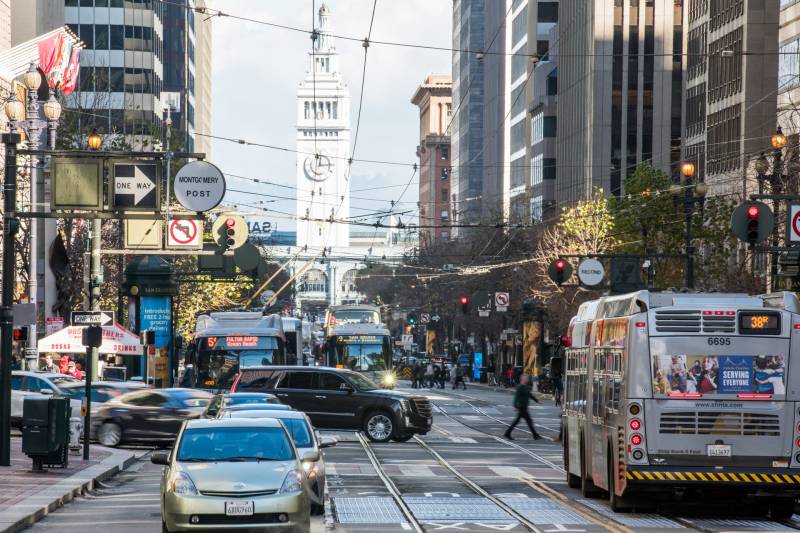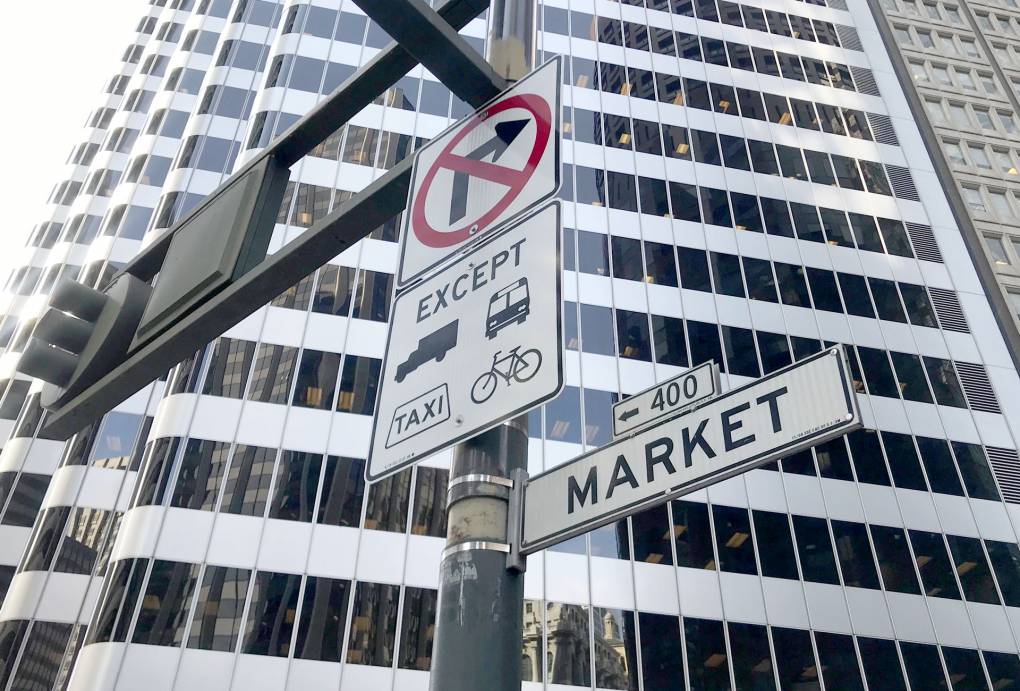After more than a decade of planning, work crews will break ground Monday on the first phase of the Better Market Street project to redesign San Francisco's busiest thoroughfare with a variety of safety and aesthetic upgrades.
Work Begins Monday on Multimillion-Dollar Market Street Renovation Project

Phase one will focus on the area between 5th and 8th streets on the corridor, and include traffic signal upgrades, wider sidewalks at intersections to reduce crossing times for pedestrians, repaving to reduce tripping hazards, wider ADA-compliant curb ramps and streetscape improvements.
“The last time we really improved Market Street was when BART was built in the '70s,” said Cristina Olea, Better Market Street project manager for San Francisco Public Works, in an interview with KQED. “It's the spine of our transit network, but … there's a lot of crashes that happen on Market Street (PDF) involving people walking and biking, and we want to make sure that we're improving safety and mobility along the corridor.”
The implementation of the Better Market Street project started back in January 2020, when a large stretch of Market Street was closed to private vehicles. The pandemic put things on hold, but now the project is back on. The construction for phase one carries a $60 million price tag, with completion scheduled for April of 2024.
The total project, when complete, will span 2.2 miles of Market Street between Octavia Boulevard and Steuart Street, with an estimated cost of $600 million. A turnaround loop for Muni’s F line along McAllister Street and Charles J. Brenham Place was originally planned as part of the first phase, but has since been postponed, pending new funding.
“It's been almost 13 years that we've been working together on the project, the planning and the design and implementation,” explained Olea. “But we're really glad that this project in mid-Market is moving forward and we've been wanting to start construction for a while now.”
Any future phases of the project will be funding dependent.
“We're working with our project partners on determining the next phase of the project and applying for grants — federal grants — and looking for other funding opportunities to help us roll out the project,” said Olea.

The project is being led by San Francisco Public Works in collaboration with various other city and county departments including the San Francisco Municipal Transportation Agency, the Public Utilities Commission, the Transportation Authority and the San Francisco Planning Department.
Some aesthetic changes also are included in the plan, such as new trees and benches. New bike racks also are being added to accommodate the surge in cyclists on Market Street since cars were banned.
The plan currently being put into action is a scaled-back version of what city officials approved in 2019. After the onset of the pandemic, as tourism and other industries ground to a halt, the city was facing a significant budget shortfall and elected to redesign the plan’s first phase.
The most significant change for cyclists was the removal of the planned sidewalk-level bike lane. Instead, the current plan keeps bikes on the road, sharing the lane with taxis, paratransit and commercial vehicles.
When Olea presented these changes to the Transportation Authority Board in October of 2020, she cited a significant increase in the number of bikes on Market Street as one of the reasons for the change, saying the planned 8-foot-wide bike lane would be too narrow to accommodate the amount of expected traffic.
“Yes, it gives people more space for people on bikes, but it also gives more space for them to potentially be hit by cars,” countered Assemblymember Matt Haney, then a city supervisor.
The original plan also called for replacing the sidewalk’s aging red bricks with concrete, rather than only repairing damaged sections. That change was meant as a cost-saving measure but was also influenced by a motivation to avoid lengthy street closures and the negative impact that could have on nearby businesses. The mid-Market corridor has struggled to recover from the economic impacts of the COVID-19 pandemic and a surge in layoffs in the tech industry this year.
Olea says they want to minimize impacts to the community as much as possible, but that there will be at least four two-week closures of the section of Market Street under construction in the second half of 2023, affecting all surface traffic and transit, although not BART or Muni Metro.
“It's one street for the city where all of our parades are, all of our important events and marches, [but] the street is looking worn and it's on our high-injury network,” said Olea. “Now is the perfect time to make these critical improvements. It really is like a once-in-a-generation project to make Market Street the beautiful corridor that it deserves to be.”